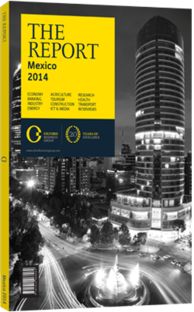OBG talks to Louise Goeser, CEO, Siemens Mesoamérica

Interview: Louise Goeser
How significant will energy reform be to industry, and is there a drop in energy costs on the horizon?
LOUISE GOESER: While oil and gas have been at the forefront of energy reform, one of the key needs in Mexico is to become more competitive in the cost of electricity. Despite the country’s competitive advantages: one of the biggest impediments to growth has been the high cost of energy, which is the key ingredient to production. Mexico can no longer afford to pass up on investment and employment in this area. Without it, firms will find better margins in neighbouring countries, which may have higher labour costs but much cheaper energy. Reforms now in progress aim to make energy cheaper, and are giving high hopes to the industrial sector. The determining factor, however, will be putting such policies into practice. Handing over power generation to private producers should, in itself, cut electricity costs by up to 40%. The numbers will vary with how energy-dependent a given industry is, but in general, every sector of the economy should see substantial gains.
Which industries in Mexico stand to gain by a shift in manufacturing from Asia? How real is the danger of becoming a nation of cheap products?
GOESER: A variety of industries are booming in Mexico, and while many are in basic manufacturing, the opening up of the energy market will bring lots of investment to value-added industries, too – especially energy-related ones like gas and petrochemicals. Having built a reputation as a major global carmaker, Mexico is now expanding its manufacturing capacities to include aerospace and is becoming a key manufacturer of advanced value-added products. This leaves no room for exclusively cheap manufacturing, as these industries are highly technical.
One can see how companies are now beginning to shift their investment strategies towards research and development (R&D). Those who build centres for innovation have a first-move advantage and the most to gain. Mexico’s high number of engineering graduates, year in and year out, will not only buttress manufacturing but boost the whole value-added supply chain.
How can research and innovation be encouraged, and what economic sectors need R&D most?
GOESER: Intellectual property rights are a good example of how Mexico’s resources are plentiful but underused. The country has registered only 0.7 patents per 10,000 citizens, yet it graduates the highest number of engineers worldwide each year. The supply of skilled workers is not met by the supply of job vacancies. This drives talented students not only to look for opportunities abroad (in Europe and especially the US), but to stay there to develop their research careers.
To reverse this trend, Mexico needs research centres. That is where investment should be directed. Mexico may be seen as an underachiever, but that is not due to lack of innovation or talent, but of structure. R&D is the hidden gem of Mexico: the pieces are there, but have so far been unstructured and underinvested.
How realistic is the Mexican Wind Energy Association’s prediction of 12 GW of wind energy by 2020? What snags must the renewables sector overcome?
GOESER: Oaxaca and Tamaulipas, the regions best suited for wind farms, have not been properly exploited because they are so remote. Bottlenecks, such as lack of infrastructure and transmission lines, also hinder development of these technologies. Wind farms also require substantial amounts of initial capital.
As for the shift toward wind, conventional power will still rule the electricity market. Technological advances have produced combined-cycle gas plants that are very efficient, and gas prices are extremely low. However, the Federal Electricity Commission is taking clear steps to prioritise renewables. They want to make wind an integral source of energy generation, and competitive without subsidies or incentives. Interest in renewables will diminish once private players are introduced, but the wind farms will continue to grow nonetheless.
You have reached the limit of premium articles you can view for free.
Choose from the options below to purchase print or digital editions of our Reports. You can also purchase a website subscription giving you unlimited access to all of our Reports online for 12 months.
If you have already purchased this Report or have a website subscription, please login to continue.

